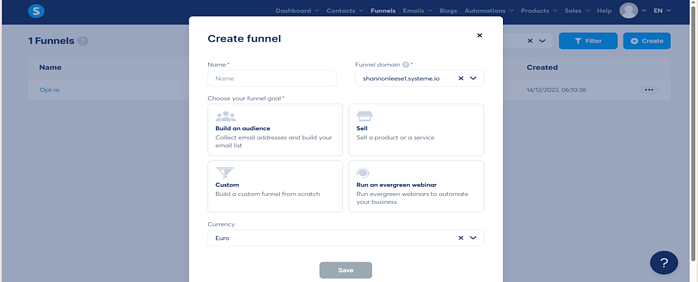You’ve probably heard the term ‘sales funnel’ thrown around in business circles, but what does it really mean? A sales funnel is essentially the journey that potential customers go through on their way to making a purchase. It’s a step-by-step process that starts the moment someone learns about your product or service and ends with them taking the action you desire, such as making a purchase or signing up for a newsletter.
The journey is broken down into stages, typically referred to as Awareness, Interest, Decision, and Action (AIDA). In the Awareness stage, potential customers are introduced to your product. They may see an ad or hear about you from a friend. Next, in the Interest phase, they’re looking for more information and begin to engage with your content. Following this, the Decision stage involves customers considering whether to purchase your product or service. Finally, the Action stage is when they pull the trigger and make a purchase or sign up.
The reason why a well-thought-out sales funnel is imperative for business success cannot be overstated. It’s not just a series of random interactions with prospective clients; it’s a thoughtfully designed path crafted to guide potential customers from their first point of contact through to a sale, ensuring consistency and efficiency in the sales process. An effective sales funnel can boost conversion rates, improve the customer experience, and ultimately increase your bottom line.
Now, this isn’t just about the traditional business model. A sales funnel is versatile and can be adapted to fit various marketing strategies, including affiliate marketing. Affiliate marketers find sales funnels especially beneficial as they are key to tracking performance and maximizing revenue – which I’m going to talk about next.
The Affiliate Marketer’s Advantage: Leveraging Sales Funnels
Affiliate marketing is about connecting with potential buyers and steering them toward products they’re likely to purchase. A sales funnel is an indispensable tool for achieving this. Think of it as a personalized roadmap that guides each visitor through the buying process, from initial curiosity to final purchase.
What’s crucial about a sales funnel for affiliate marketers is its ability to pinpoint where prospects are in their journey. By understanding each stage, from awareness to action, affiliates can tailor their communications, offer valuable content, and gently nudge the prospect toward the affiliate product.
For example, a well-structured funnel can alert you when a prospect is ready for more detailed information, nudging them closer to a decision. Equally, it lets you know who just wants to stay in the loop for now.
It’s not just about influencing the buyer’s journey; it’s also about metrics and insights. Sales funnels grant affiliate marketers the power to track conversions and identify which strategies work best. This data-driven approach leads to smarter marketing moves and, ultimately, more successful campaigns.
And this success isn’t limited to ‘the few.’ There’s a wealth of examples out there showing beginners and seasoned pros alike using sales funnels to thrive. Take a look at stories of affiliate marketers who’ve found their rhythm with well-oiled sales funnels, bringing in passive income and growing their business footprints.

Blueprint for Success: Building Your Own Sales Funnel
So you want to make your own sales funnel? That’s a smart move. Let’s walk through the essential steps you need to take to create a functional and effective sales funnel that could elevate your affiliate marketing game.
First off, we’re going to identify your target audience. Sounds basic, right? But it’s absolutely crucial. You need to know who you’re talking to in order to communicate effectively. After that, you’re going to craft a compelling offer, something that resonates with your audience and highlights the value of your product or service.
Next up, you’ll design your landing page. This is where visitors are converted into leads, so every detail counts — from the layout and the headlines to the call-to-action. And don’t forget to test different versions! A/B testing can provide valuable insights into what works best.
Now comes the nurturing part — keeping your leads interested. Through email marketing, content creation, and regular engagement, you’re building a relationship with your potential customers.
Of course, we can’t overlook the importance of the decision stage. Here, you refine your pipeline to lead your prospects to the point where they’re ready to purchase. Make their decision easy with clear, convincing product information and irresistible calls to action.
Finally, you’re going to analyse and optimize your sales funnel. With tools like Google Analytics, you can track your funnel’s performance, identify where prospects drop off, and make adjustments accordingly.
Remember, making a sales funnel is not a one-time task. It’s an ongoing process. You can always adjust your approach down the road as you learn more about your audience and what attracts them.
I’ll leave you with one thought: if constructed well, your sales funnel isn’t just a pathway to more sales; it’s the foundation of a long-term relationship with your audience. Taking the time to build it right pays off in the loyalty and trust of your customers, which, in my book, is the ultimate success.
I highly recommend Systeme.io they offer a FREE account where you’re able to get to grips with sales funnels, campaigns, rules and workflows.
>> CLICK HERE TO SIGN UP FOR YOUR FREE ACCOUNT
I have also wrote a review on Systeme.io which you should check out:
Drop a comment below if you have any questions 🙂
